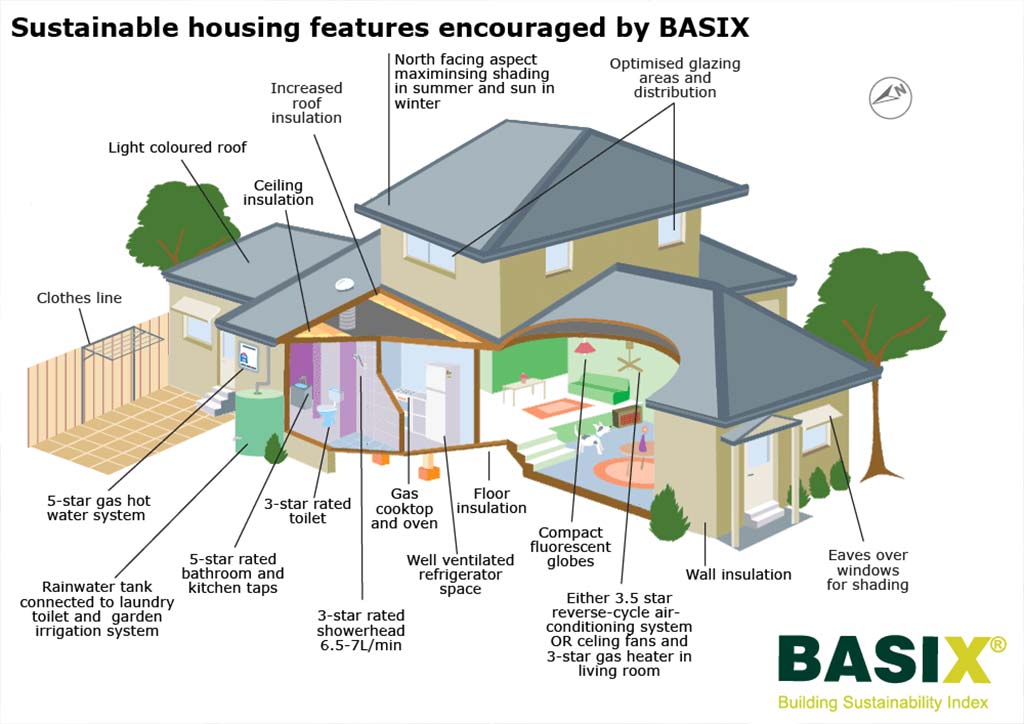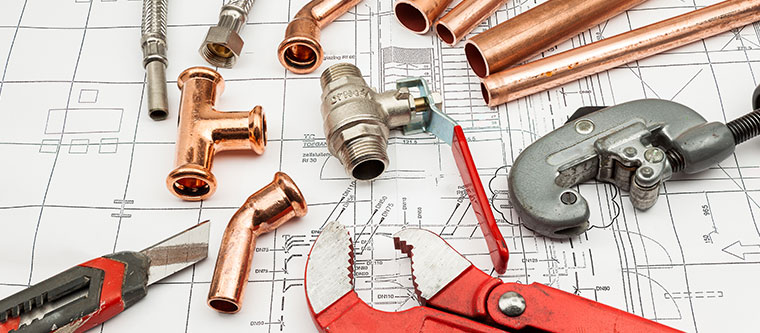Key Information About Your House's Plumbing System Anatomy
Key Information About Your House's Plumbing System Anatomy
Blog Article
We've come across this great article involving Anatomy of a House: Understanding the Components listed below on the web and figured it made perfect sense to discuss it with you here.

Comprehending how your home's pipes system works is essential for each property owner. From supplying clean water for alcohol consumption, cooking, and showering to securely removing wastewater, a well-maintained pipes system is essential for your household's wellness and convenience. In this detailed overview, we'll check out the complex network that makes up your home's pipes and offer pointers on maintenance, upgrades, and dealing with typical problems.
Intro
Your home's pipes system is greater than just a network of pipes; it's a complex system that guarantees you have access to tidy water and reliable wastewater elimination. Recognizing its components and just how they collaborate can help you protect against costly repair work and make sure everything runs smoothly.
Basic Parts of a Pipes System
Pipes and Tubing
At the heart of your plumbing system are the pipes and tubing that carry water throughout your home. These can be made from different products such as copper, PVC, or PEX, each with its advantages in terms of sturdiness and cost-effectiveness.
Components: Sinks, Toilets, Showers, and so on.
Components like sinks, commodes, showers, and bath tubs are where water is utilized in your home. Understanding how these fixtures connect to the plumbing system aids in identifying issues and preparing upgrades.
Shutoffs and Shut-off Points
Shutoffs control the circulation of water in your plumbing system. Shut-off valves are vital during emergencies or when you need to make repairs, enabling you to isolate parts of the system without interfering with water flow to the whole residence.
Water System
Key Water Line
The major water line connects your home to the local water or an exclusive well. It's where water enters your home and is distributed to various fixtures.
Water Meter and Stress Regulatory Authority
The water meter actions your water use, while a pressure regulatory authority ensures that water flows at a safe stress throughout your home's pipes system, stopping damage to pipes and fixtures.
Cold Water vs. Warm water Lines
Understanding the distinction between cold water lines, which supply water straight from the main, and warm water lines, which bring heated water from the hot water heater, assists in repairing and planning for upgrades.
Drainage System
Drain Pipeline and Traps
Drain pipelines bring wastewater far from sinks, showers, and commodes to the sewage system or sewage-disposal tank. Traps stop sewage system gases from entering your home and also trap debris that might trigger clogs.
Air flow Pipes
Ventilation pipelines allow air into the drainage system, protecting against suction that might slow down drain and cause catches to empty. Correct ventilation is crucial for preserving the honesty of your pipes system.
Value of Proper Drain
Making sure correct drain stops back-ups and water damage. Routinely cleaning drains pipes and keeping catches can avoid pricey repair work and extend the life of your pipes system.
Water Heating Unit
Types of Hot Water Heater
Hot water heater can be tankless or conventional tank-style. Tankless heaters warmth water as needed, while tanks save heated water for immediate use.
Just How Water Heaters Attach to the Plumbing System
Recognizing just how water heaters attach to both the cold water supply and warm water distribution lines assists in detecting problems like not enough hot water or leakages.
Maintenance Tips for Water Heaters
On a regular basis flushing your hot water heater to remove sediment, examining the temperature settings, and checking for leaks can prolong its lifespan and boost power effectiveness.
Usual Plumbing Problems
Leakages and Their Reasons
Leakages can occur because of aging pipelines, loosened fittings, or high water pressure. Resolving leaks quickly stops water damages and mold growth.
Obstructions and Blockages
Clogs in drains pipes and commodes are typically brought on by purging non-flushable items or an accumulation of oil and hair. Making use of drain displays and bearing in mind what goes down your drains can stop obstructions.
Indicators of Plumbing Problems to Look For
Low tide stress, slow-moving drains, foul odors, or unusually high water bills are indications of prospective pipes issues that need to be addressed immediately.
Pipes Maintenance Tips
Routine Evaluations and Checks
Set up annual plumbing assessments to capture concerns early. Search for indications of leakages, corrosion, or mineral accumulation in taps and showerheads.
DIY Upkeep Tasks
Simple tasks like cleansing faucet aerators, checking for commode leaks using color tablet computers, or protecting revealed pipes in chilly climates can protect against significant pipes concerns.
When to Call a Professional Plumbing Professional
Know when a plumbing issue calls for professional competence. Trying intricate fixings without proper knowledge can result in more damages and greater repair service prices.
Updating Your Pipes System
Factors for Updating
Updating to water-efficient fixtures or replacing old pipes can enhance water high quality, minimize water expenses, and boost the worth of your home.
Modern Pipes Technologies and Their Advantages
Check out innovations like smart leakage detectors, water-saving commodes, and energy-efficient water heaters that can save money and lower ecological effect.
Cost Factors To Consider and ROI
Compute the in advance costs versus long-term financial savings when thinking about plumbing upgrades. Lots of upgrades spend for themselves with minimized energy expenses and fewer repairs.
Environmental Influence and Preservation
Water-Saving Components and Home Appliances
Setting up low-flow faucets, showerheads, and toilets can significantly reduce water use without giving up efficiency.
Tips for Decreasing Water Usage
Basic habits like dealing with leakages immediately, taking shorter showers, and running complete loads of washing and dishes can conserve water and reduced your utility costs.
Eco-Friendly Plumbing Options
Take into consideration sustainable pipes materials like bamboo for floor covering, which is durable and green, or recycled glass for countertops.
Emergency situation Preparedness
Actions to Take During a Pipes Emergency
Know where your shut-off shutoffs are located and exactly how to turn off the water system in case of a ruptured pipeline or major leak.
Value of Having Emergency Contacts Helpful
Keep get in touch with info for neighborhood plumbings or emergency situation solutions easily offered for quick action throughout a plumbing dilemma.
DIY Emergency Situation Fixes (When Applicable).
Momentary repairs like making use of duct tape to patch a leaking pipeline or placing a container under a trickling faucet can reduce damages till a specialist plumbing shows up.
Verdict.
Understanding the composition of your home's pipes system encourages you to maintain it successfully, saving money and time on repair services. By complying with normal upkeep regimens and remaining notified concerning contemporary pipes innovations, you can ensure your plumbing system operates successfully for several years to come.
Understanding Your Home Plumbing System: A Comprehensive Guide
Plumbing System: The Lifeline of Your Home
At its core, the plumbing system is designed to perform two primary functions: bring fresh water into your home and remove wastewater. The system is a network of pipes, fixtures, and other components that transport water and sewage. Residential plumbing systems include potable water supply lines, drain-waste-vent (DWV) systems, and various plumbing fixtures that make water use in daily tasks possible.
Key Components:
Water Supply: This part of your plumbing system brings municipal water into your home, passing through the main water supply line. It s responsible for supplying all water needs, from drinking to bathing.
Drainage System: It carries waste and water away from your home to the sewer or septic system. This system includes all the piping within your home that leads to external sewage or septic systems.
Vent System: An essential yet often overlooked component, the vent system allows sewer gases to escape and lets air into the drainpipes, ensuring water and waste move correctly through the system.
Fixture: More Than Just Taps and Toilets
Plumbing fixtures are the most interactive parts of the plumbing system, including faucets, showers, toilets, and sinks. Each fixture is connected to the plumbing system and plays a role in either the delivery of freshwater or the disposal of waste and wastewater.
Types of Fixtures:
Faucets and Sinks: Used for washing hands, dishes, and other daily water needs.
Toilets: Dispose of human waste through the sewage system.
Bathtubs and Showers: Provide bathing facilities, requiring both hot and cold water supply.
Water Supply: The Source of Life
The water supply system is a critical component, ensuring that potable water is available throughout your home for various uses, including drinking, cooking, and cleaning. This system consists of pipes that distribute water to different parts of the house, controlled by valves to regulate the water flow.
Types of Plumbing: Materials and Methods
Various types of plumbing systems and materials are used in residential settings, each with its advantages and applications. From copper and PVC pipes for water supply to cast iron and ABS for drainage, the choice of materials can impact the longevity and efficiency of your plumbing system.
https://intownplumbingtx.com/articles/home-plumbing-system-guide/

Understanding Your Home Plumbing System: A Comprehensive Guide
Plumbing System: The Lifeline of Your Home
At its core, the plumbing system is designed to perform two primary functions: bring fresh water into your home and remove wastewater. The system is a network of pipes, fixtures, and other components that transport water and sewage. Residential plumbing systems include potable water supply lines, drain-waste-vent (DWV) systems, and various plumbing fixtures that make water use in daily tasks possible.
Key Components:
Water Supply: This part of your plumbing system brings municipal water into your home, passing through the main water supply line. It s responsible for supplying all water needs, from drinking to bathing.
Drainage System: It carries waste and water away from your home to the sewer or septic system. This system includes all the piping within your home that leads to external sewage or septic systems.
Vent System: An essential yet often overlooked component, the vent system allows sewer gases to escape and lets air into the drainpipes, ensuring water and waste move correctly through the system.
Fixture: More Than Just Taps and Toilets
Plumbing fixtures are the most interactive parts of the plumbing system, including faucets, showers, toilets, and sinks. Each fixture is connected to the plumbing system and plays a role in either the delivery of freshwater or the disposal of waste and wastewater.
Types of Fixtures:
Water Supply: The Source of Life
The water supply system is a critical component, ensuring that potable water is available throughout your home for various uses, including drinking, cooking, and cleaning. This system consists of pipes that distribute water to different parts of the house, controlled by valves to regulate the water flow.
Types of Plumbing: Materials and Methods
Various types of plumbing systems and materials are used in residential settings, each with its advantages and applications. From copper and PVC pipes for water supply to cast iron and ABS for drainage, the choice of materials can impact the longevity and efficiency of your plumbing system.
https://intownplumbingtx.com/articles/home-plumbing-system-guide/
We hope you liked our post on Anatomy of a House: Understanding the Components. Thanks so much for taking the time to browse our article post. Appreciated our entry? Please quickly share it. Let somebody else discover it. Thanks a bunch for being here. Come back soon.
Schedule Service Now Report this page